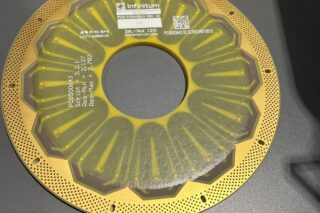For a long time, major players in aerospace and defense focused primarily on designing and delivering systems—aircraft, satellites, embedded systems, and so on. But in recent years, we’ve witnessed a paradigm shift, says Marc Rivière, Strategic Advisor for A&D at PTC.
Today, efforts are being made to provide visibility and insights throughout the entire lifecycle of systems that must remain available, operational, and—above all—relevant. This is what we now call “mission readiness”—or operational availability. In other words, it’s about staying close to the customer.
Delivered Aircraft or Available Aircraft?
Airbus is clearly no longer just an aircraft manufacturer. The group has embraced a service-oriented approach through solutions like failure prediction and maintenance cycle optimization. It’s worth remembering that maintenance is the second-largest cost item for an airline.
But how can this be addressed? Airbus offers systems that capture field data, process it, and transmit it to maintenance teams. This creates a virtuous cycle with less latency between potential issues and their resolution.
The U.S. Defense Sector Chooses Availability
On the defense side, the shift is more recent but equally transformative. In 2021, the U.S. Navy’s doctrine was based on volume: “our strength lies in the number of ships, aircraft, drones…” Today, everything revolves around availability, based on the principle that an inoperative military system is a useless one.
The Navy has thus launched a transformation program based on a model-based approach, with a clear goal: optimize mission readiness. This requires a deep understanding of systems, usage scenarios, failure histories, critical components, and more. Most importantly, it requires the ability to centralize this data to make informed, real-time decisions.
Digital Thread as an Enabler
The mission readiness model demands strong digital thread between engineering teams and service teams. Manufacturers must anticipate usage, adapt maintenance strategies, and be able to evolve designs based on field feedback.
A shared platform between engineering and services is essential so that teams can not only manage products but also access the full history of activities. By centralizing data, the platform enables configuration tracking, incident traceability, and spare parts management.
Toward a Native Service-Oriented Approach…
This dynamic isn’t about “adding” services at the end of the chain. It’s a structural transformation: designing products from the outset with a service-oriented mindset. This means engineers must have access to failure models, operational feedback, and wear indicators. It also means maintenance tools must be integrated from the earliest design phases.
What are the benefits?
- Optimizing maintenance costs
- Reducing downtime
- Maximizing equipment lifespan
In a world where technological superiority is no longer enough, the ability to keep systems operational becomes a competitive advantage. Whether in civil transport or military sovereignty, the question is no longer how many systems you own—but how many are truly ready for use.
That’s why mission readiness cannot be achieved without a solid, cross-functional, interoperable digital environment.
This foundation is a platform—not in the marketing sense, but in the strategic sense: a space where data, engineering, and services converge.






![Image [BUYING GUIDE] How to Choose the Right Industrial Robot?](/wp-content/uploads/sites/3/Industrial-Robot-320x213.jpg)

![Image [Buying Guide] How to Choose the Right Safety Shoes?](/wp-content/uploads/sites/3/Safety-Shoes-320x213.jpg)


![Image [Buying Guide] How to Choose the Right AMR?](/wp-content/uploads/sites/3/AMR-320x213.jpg)